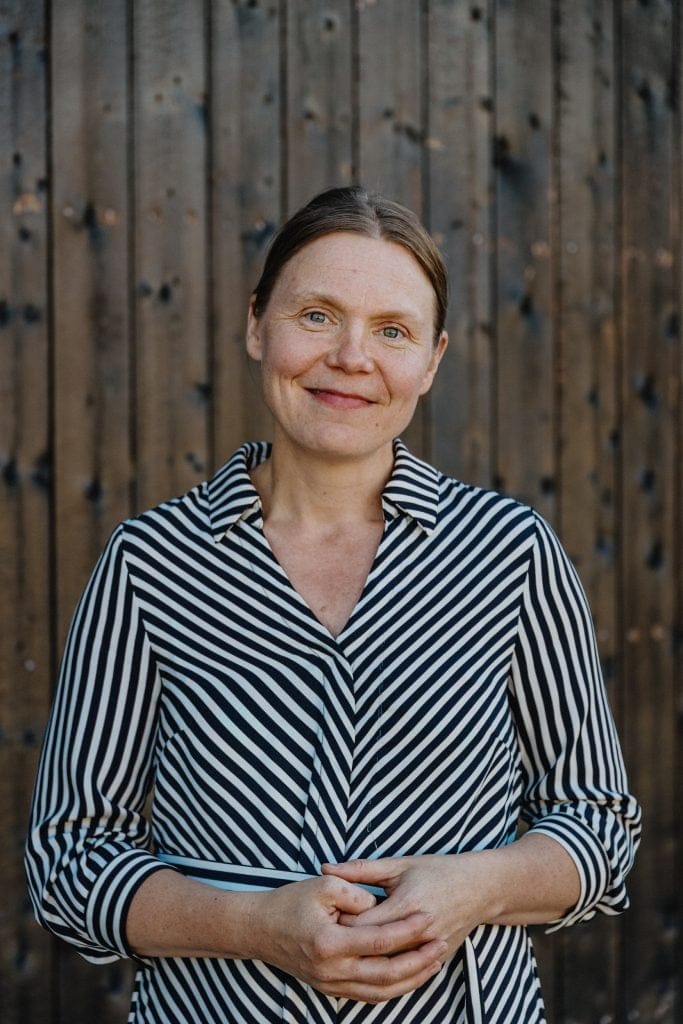The Q Power business is based on years of hard work in research and development. Q Power is a case example of a lab-based innovation spinning out into the market with an internationally competitive product.
The founding history of our company dates back to the early 2010’s, when a small group in the Natural Resources Institute of Finland started to reseach the utilization of microbes in synthetic methane production. A key figure in the development work from the get-go was PhD Anni Alitalo, who is current the R&D director of Q Power.
Developing a product around a biological process is demanding work, requiring tenacity and grit in addition to world-class competence.
In this interview Anni sheds light on the nature of R&D work. She also highlights some of the decisions made, which have led to the uniquely efficient reactor technology Q Power has now taken to market.

Q Power is an innovative deep tech company engaged in technology development. You have had a central role in our product development from a very early phase. How would you describe the nature of R&D at Q Power?
To put it shortly: our work is experimental, but based on basic research. We experiment and do a lot of testing, developing new things in on a very practical level.
Our work is also highly broad-minded: we try a lot of surprising and unconventional things. The ideal attitude to strive for in R&D is the kind of curiosity and playfulness that children have.
It is also very critical to have people with complementing skill sets working together. It’s best to have various different skill sets and personalities in a team to help find new viewpoints. Product development is very much a team effort.
What is the most challenging aspect of your job?
When developing new things, you are often not able to rely on prior work of others. You need to be able to deal with uncertainty and have enough faith in what you are doing. This is not always easy. Sometimes it’s very difficult to know if we’re moving in the right or wrong direction. At times development work is like running into a brick wall, and then all of a sudden you find the right way forward. Usually reaching success required quite a few failed attempts first.
Q Power has developed a unique technology for the P2X market. This has taken some unique competences. What do you see as the main competitive advantage of Q Power?
Our approach has been very unconventional – for instance in the way that we utilize mixed microbial cultures in contrast to pure cultures. This has proven to be a food decision, even though a couple of years ago mixed populations were not considered too advanced. As research has accumulated, this thinking has changed. Now you could say that mixed populations have become something of a trendy field.
The same goes for our solid state bioreactor. When we started developing the reactor, labs mostly used liquid fermentors in methanation. Solid state reactors weren’t even described in text books in the field. The first reactors were indeed quite rudimentary, mostly described as a pile of nutrients available for the microbes. Solid state reactors were far from the polished systems that liquid fermentors were, equipped with sophisticated measurement and control devices. That didn’t stop us from developing a solid state reactor.
Over the years we have developed a highly controllable, effective reactor, which can be utilized for a number of purposes. The reactor is especially well suited for the production of gaseous or liquid products from gaseous feedstocks. The reactor could also be used e.g. for the production of single-celled proteins.
In methanation, the limited solubility of hydrogen and carbon dioxide in water is a limiting factor for reactor efficiency. People have tried to improve solubility by mixing and pressurizing reactors. However, these solutions tend to use a lot of energy and worsen the net energy efficiency of the reactor.
In our technology, the gases are transferred very effectively to the microbes without mixing or pressurization. The efficiency of our reactor is acually very close to the theoretical maximum efficiency, as we don’t need to use energy for mechanical agitation of the reactor.
A great advantage of ours is also the fact that we have developed the whole chain ranging from microbe selection all the way to a production-scale system. We have built the whole technical system around the process: reactors, automation and process control. This means we are also very flexible in customizing the system for different kinds of value chains.
In the next few years, Q Power is aiming for strong international growth. What kind of new R&D professionals do you think we will need to support our growth?
We are going to need competent people with many different kinds of profiles. Our aim is also to expand our R&D into new areas. In general, we are very interested in taltented people with multidisciplinary competences. Experience and skills in product development is definitely an asset.